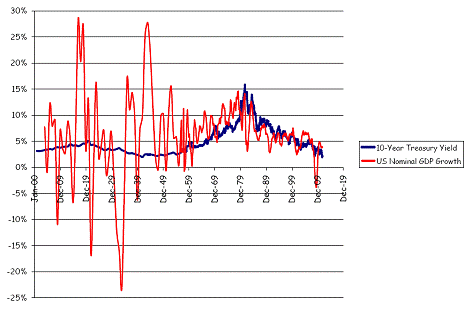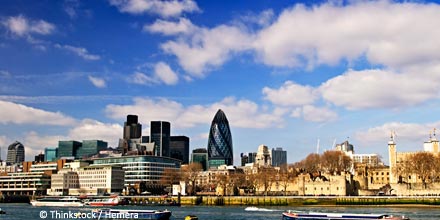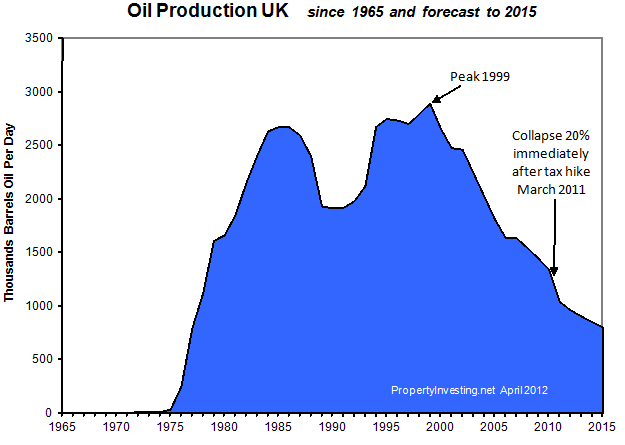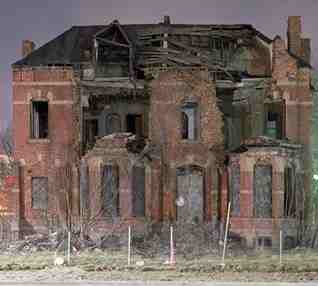424: 2012 Stumbling Along - Pre-curser to 2013 Crisis
05-03-2012

PropertyInvesting.net team
Flat-lining Before The Mini-Summer Crash Then The Big 2013 Crisis: You may have noticed that 2012 is turning out to be a rather boring year economically – as we thought it would at the beginning of the year. The real reason for this is that there are too many important elections in the western world – the political elite are working hard with state run central banks to prop the whole lot up. This vested interest is because the politicians appoint the bankers, and the bankers want to keep their jobs – they want to keep the show on the road for as long as possible. Give out good news in the election year. None more so that President Obama and Ben Bernanke in the USA. Central banks are printing money and buying their own debt with this printed money – to shore things up and keep interest rates down. The bond and debt markets are being grossly manipulated by the central banks – they are being regulated – they are not real markets – not for the time being at least. All this behind the scenes activity is just delaying the day the whole lot implodes when the bond market bubble goes pop and interest rates sky-rocket.
European Debt Problems And Recession: The US Administration must be quietly pleased they can point to the Europe problems and recession whilst they eek out some phantom growth from their fiat money. They can even blame the slowing European economy for some of their own slow growth. Indeed, Europe has many problems, but at this time, at least they are trying to tackle the fiscal deficits and reduce public sector spending - there are austerity measure that are required to re-balance the economies. The US is doing exactly the opposite. They are using fiat printed money created from thin air to produce the illusion of growth, when in fact it’s just paper creating bubbles in their economy.
It’s weird that the socialists like to create money and not tackle deficits and increase spending – and the size of government – the so called Keynesian economic school. And they think this helps the poor. Giving hand-outs to the poor will help them for a short while, but eventually inflation takes hold, unemployment rises, food prices rise, energy prices rises and the poor normally cannot (or do not) take advantage of asset increases property, oil, gold and silver that tend to do very well when large amounts of printed money are created from thin air. The rich – knowledgeable investors - use the very cheap printed money to speculate – thence drive up oil, gold and silver prices – property prices follow suit as inflation takes hold and honest savers that have been working all their lives for retirement are decimated in the process as savings rates are almost zero whilst inflation runs at 4% and real inflation is more like 8%.
Cheap Money Good For The Rich - Not The Poor: Unless you can access this cheap printed money – the cheap loans - then use it to speculate and make high returns – your wealth will be destroyed. But the reality is – may be the top 10% of the wealthiest financially literate in the population in these high inflationary times will identify the problem, turn it into an opportunity and make serious money from the waves of cheap printed money that flood the streets. When inflation takes off, their debt is reduced dramatically over a number of years. The investment banks are of course playing this game at the moment. They use the fiat money to speculate – high frequency trading – buying commodities as a hedge – and any other form of investment that looks a good hedge against inflation. This includes food, water, farmland, metals, mining, oil, gas, coal and energy.
 Bubble Created By Fed: These central banks – like the Fed – create bubbles all around the world. Years ago, we had national economies that were less interconnected that today. But in today’s economy, all the stock markets are interconnected, trade is global and waves of US printed money end up all around the world creating bubbles. When the US came off the gold standard in 1971, is was the beginning of the US dollar as a truly fiat currency, one back by nothing – a currency that can be created on a computer screen – used to manipulate markets, drive asset prices up and down and prop things up or to create a run on assets and currencies. The Dow Jones is propped up by this fiat money. Meanwhile the silver price is manipulated downwards by short positions from JP Morgan – on behalf of the US Fed. Silver and gold are competitors to the US dollar, so the Fed tried to keep them low – to give the impression that their fiat currency is valuable and performing better than in actually is. But this show will eventually fail sometime in the next few years. Our view is that it is not a question of if, it’s a question of when.
Bubble Created By Fed: These central banks – like the Fed – create bubbles all around the world. Years ago, we had national economies that were less interconnected that today. But in today’s economy, all the stock markets are interconnected, trade is global and waves of US printed money end up all around the world creating bubbles. When the US came off the gold standard in 1971, is was the beginning of the US dollar as a truly fiat currency, one back by nothing – a currency that can be created on a computer screen – used to manipulate markets, drive asset prices up and down and prop things up or to create a run on assets and currencies. The Dow Jones is propped up by this fiat money. Meanwhile the silver price is manipulated downwards by short positions from JP Morgan – on behalf of the US Fed. Silver and gold are competitors to the US dollar, so the Fed tried to keep them low – to give the impression that their fiat currency is valuable and performing better than in actually is. But this show will eventually fail sometime in the next few years. Our view is that it is not a question of if, it’s a question of when.
US Structural Problems: The US economy is currently giving this impression that it is looking in the rear view mirror at the old recession of 2008 – and things are improving. Money is flowing into the dollar – some people call the dollar a safe haven. Bond rates are very low. Silver prices have dropped back to $30.50 per Toy ounce. Gold prices are $1630 per Troy ounce. The Dow Jones is close to a high at 13500. Unemployment is dropping. Things on the face of it look reasonably rosy. But behind this facade are gaping cracks – just look at the fundamentals:
-
The US annual deficit is >10% of GDP
-
The US has a very low 3.1% savings rate at present
-
43% of US retirees have less than $10k in retirement savings
-
Federal worker wages are far too high – the average including benefits is $130,000 – this is twice the private sector wages which average only $65,000
-
Wage growth in the public sector was 2% in 2010 and was even higher at 3.9% in 2009 – meanwhile private sector wages were stagnant
-
The US debt is $15.2 Trillion and rising at $1.5 Trillion a year despite economic growth – this does not include $6.3 Trillion for Fannie Mae and Freddie Mac mortgage liabilities
-
Unfunded liabilities are thought to be in excess of $75 Trillion including Medicare, Medicaid and Social Security - this is 500% of annual GDP
-
The derivatives market is thought to be around $75-100 Trillion
-
The US government has to borrow 40% of every dollar it spends
-
Tax revenues are $1.75 Trillion but government spending is $2.75 Trillion per annum
-
There are too many government jobs being created and not enough private sector jobs – an example is the 1.2 million temporary census workers created in 2010 to produce a people
 survey that does not create any value
survey that does not create any value -
Each US person costs $6500 per annum in Medicare and Medicaid expenditure - that's $26,000 per annum for a family of four
-
Each US person costs $1500 per annum in Military expenditure
-
Each US person costs $1500 per annum in Oil Import expenditure
-
The USA has 5% of the world’s population but uses 22% of the world’s energy – importing half of it's oil
-
The Department of Education costs $63 billion per annum – costs have risen 40% since 2002 – college costs have also risen 40% since 2002, more than many country’s GDPs
-
The Department of Energy was created to reduce the US dependence on imported oil – however, –since it was created oil imports have risen from 50% to the current level of 65% and costs $330 billion per annum
-
Europe has problems with Greece which is 3% of Europe’s GDP. This is the same since % as Virginia’s GDP within the USA. Meanwhile California is almost bankrupt and has 13.4% of the US GDP
-
It would take retirement savings of $100,000,000 to earn $50k in retirement income at Wells Fargo bank due to rediculously low interest rates
Obama Will Win: As we have been saying, it highly likely this show will be kept on the road through to the US Election in Nov 2012 and President Obama will be re-elected. Ben Bernanke will keep his job as Fed Chairman. But then disaster will strike in our view – 2013 will see a major meltdown. The US dollar will surely crash and inflation will sky-rocket.
Fiat Growth: The only growth encountered has been because of the fiat printed money. In the US, business investment is minimal. Savings rates are very low. Private secto r employment is not significantly rising. The US debt continues to increase dramatically. Trade deficits increase. Fiscal deficits increase. Tax receipt are stagnant. Food and energy prices continue to rise. And the true inflation rates are being manipulated downwards. People’s purchasing power is being dramatically eroded and living standards are dropping – particularly for young and old people. But things will actually get far worse in 2013 as this slow-burn collapse speeds up. The US and European deficits are unsustainable. The debts cannot be paid back – it’s that simple. The US will either have to default or accelerate the money printing to destroy the debt through high inflation. The Fed seems to favour the latter approach – but this will also eventually lead to some form of default.
r employment is not significantly rising. The US debt continues to increase dramatically. Trade deficits increase. Fiscal deficits increase. Tax receipt are stagnant. Food and energy prices continue to rise. And the true inflation rates are being manipulated downwards. People’s purchasing power is being dramatically eroded and living standards are dropping – particularly for young and old people. But things will actually get far worse in 2013 as this slow-burn collapse speeds up. The US and European deficits are unsustainable. The debts cannot be paid back – it’s that simple. The US will either have to default or accelerate the money printing to destroy the debt through high inflation. The Fed seems to favour the latter approach – but this will also eventually lead to some form of default.
2013 Collapse: The message is, the current fairly bleak picture will get a lot worse in 2013 and you need to now position yourself for this.
Silver: The very best investment at this time – in our view – must be silver. At £30.5/Troy ounce it is ridiculously cheap – the bargain of the century - seriously. One day, sometime in the next 2-5 years, governments will no long be able to manipulate it’s price downwards. It will explode in price – our target is $400/ounce.
Iran - An Issue Since 1979: We can’t help thinking eventually the Iranian situation will become completely unsustainable and explosive. There are negotiations ongoing and pressure being exerted – we doubt the Iranians will stop their nuclear programme and this will lead to war. Israel and the USA probably have 12 months left to stop this activity – certainly they will not do anything drastic before the Nov 2012 Election, but shortly after this – it’s difficult to see the whole situation will end without some sort of crisis. When this crisis breaks out – oil prices will sky-rocket. The already tight supply will be tightened even further and panic will set in – driving prices way over $150/bbl. But it’s best not to expect this in 2012 – oil prices are likely to stay range bound between $100 and $125/bbl. Looking back, the Iranian Revolution in 1979 created an oil crisis in 1980 and gold sky-rocketed five fold to $850/ounce with silver driving up to $55/ounce - it could happen again in 2013. 2012 looks remarkably like 1979 from oil, gold, Iran and inflationary stand-points. Study what happened in 1980 and you will get a feeling for what 2013 could be like.
and pressure being exerted – we doubt the Iranians will stop their nuclear programme and this will lead to war. Israel and the USA probably have 12 months left to stop this activity – certainly they will not do anything drastic before the Nov 2012 Election, but shortly after this – it’s difficult to see the whole situation will end without some sort of crisis. When this crisis breaks out – oil prices will sky-rocket. The already tight supply will be tightened even further and panic will set in – driving prices way over $150/bbl. But it’s best not to expect this in 2012 – oil prices are likely to stay range bound between $100 and $125/bbl. Looking back, the Iranian Revolution in 1979 created an oil crisis in 1980 and gold sky-rocketed five fold to $850/ounce with silver driving up to $55/ounce - it could happen again in 2013. 2012 looks remarkably like 1979 from oil, gold, Iran and inflationary stand-points. Study what happened in 1980 and you will get a feeling for what 2013 could be like.
Recession or Weak Growth - Its The Oil Price Stupid! Just remember the world economies – particularly the western economies, cannot handle oil prices over $125/bbl – this is the point a recession starts. The current high oil prices of ~$115/bbl have been bad enough to drive Spain, Italy, UK, Greece and Ireland into recession. Germany is slowing down. Any higher will create a really big problem. So Iran could be the difference between growth and recession in early 2013.
High Oil Prices Bad News - Reasons: Many economists think that if oil prices rise, then there is just a transfer of wealth from the oil importing nations to the oil exporting nations, and it does not affect global GDP growth markedly. This is a mistake. If oil prices rise, it's like a massive tax on all oil importing nations – this tax then goes to OPEC countries who spend larger amounts of money on social spending programmes and subsidies that create little real value but keep the masses from rising up against the regimes in power. Very little of this money is invested in private sector enterprises that create a lot of added extra value and real meaningful employment. So overall global GDP drops – as inflation takes hold – with a particularly negative impact in developed oil importing nations with high oil consumption per capital produced and low manufacturing output and industry – examples being Greece, Ireland and Portugal.
Marginal Cost of Oil: The r eally disturbing fact is that the marginal cost of additional oil barrels – that is – how much money is required to create an extra barrel of oil, is running at well over $80/bbl. Of course, many OPEC countries can still produce oil for less than $20/bbl, but in the USA, small operators are spending in excess of $80/bbl to get a new barrel developed and produced. As OPEC oil production is not able to keep up with demand from developing nations like India and China, then oil prices will naturally drift higher. Added to this the fact that developed oil importing nations like USA, France, Germany, UK and Japan will keep printing money to pay for the oil imports and deficits – these extra dollars will naturally send oil prices higher further fuelling inflation and unemployment. Its not a pretty picture and its what tends to happen in the later stages of a cyclical commodities bull run -this one started in 2000 and would normally last about 17 1/2 years in length. Developed nations have no option but to print money, creating inflation, driving commodities prices high and creating a viscous circle before a major crisis and re-set occurs at the end of the commodities bull run - this could be any time between 2013 and 2018 according to our prognosis.
eally disturbing fact is that the marginal cost of additional oil barrels – that is – how much money is required to create an extra barrel of oil, is running at well over $80/bbl. Of course, many OPEC countries can still produce oil for less than $20/bbl, but in the USA, small operators are spending in excess of $80/bbl to get a new barrel developed and produced. As OPEC oil production is not able to keep up with demand from developing nations like India and China, then oil prices will naturally drift higher. Added to this the fact that developed oil importing nations like USA, France, Germany, UK and Japan will keep printing money to pay for the oil imports and deficits – these extra dollars will naturally send oil prices higher further fuelling inflation and unemployment. Its not a pretty picture and its what tends to happen in the later stages of a cyclical commodities bull run -this one started in 2000 and would normally last about 17 1/2 years in length. Developed nations have no option but to print money, creating inflation, driving commodities prices high and creating a viscous circle before a major crisis and re-set occurs at the end of the commodities bull run - this could be any time between 2013 and 2018 according to our prognosis.
Commodities Bull Run: So in our view, we still have 1-6 years left of this commodities bull run. Shortages will get more severe. Taxes by socialist government will further fuel the shortages in commodities. Nationalisation of commodities companies will spend the shortages up even further (note: since Venezuela nationalised its oil businesses, its production has crash to 50% of it's 1999 levels). The printed money will further fuel oil prices. Inflation will take hold. Debts will rise. More money will be printed and currencies debased – a race to the bottom in the hope that competitiveness will improve. All the time an illusion is created - but no real growth on inflation induced decline.
In such an economic environment, it's best to be:
Long: Oil, gas, coal, farmland, metals, silver, gold, property, art, physical assets, businesses in safe countries with net commodities exports like Canada, Australia, Norway
Short: Bond, cash-savings, high-tech stocks (high P/E ratios), government debt, currencies of oil importing nations, airlines, tourism, risky countries 
The countries to avoid are the ones with largest oil import bills when compared to their per capita output:
Greece, Portugal, Ireland, Italy, Spain
Other countries to be very careful with – that have significant but declining manufacturing and large oil/gas import bills are:
USA, France, Germany, Belgium, Japan
UK Outlook: The UK is a strange mix. It imports very little oil though this is increasing drastically since the production crash-crisis hit March 2011 after Osborne increased North Sea taxes (production crashed by 20% in subsequent year after). Gas imports are also sky-rocketing since this North Sea tax also affected the gas businesses and fields – leading to a production crisis-crash – dropping also 20% in a year since March 2011. Meanwhile manufacturing remains in continued decline – albeit this is a slow decline. The UK economy is heavily dependent and exposed to London and the financial services industry. Take away London’s financial district and the wealth this generates and regrettably, the UK economy would not survive – there would be a gigantic knock-on impact on all other business sectors in the UK. At the moment, because the government has a plan to tackle the deficit – both the Tory and Lib-Dems take this seriously – then the markets have rewarded the government with low interest rates and a strengthening Sterling – some people even consider the UK a new safe haven. Granted, it's safe compared with many other European countries, but the UK deficit and debt are still massive – if anything, the government needs to cut faster and deeper into the public sector spending that got completely out of control during Labour’s 13 year tenure from 1997 to 2010. A classic example of this failed economic management was Gordon Brown’s decision to sell the UK gold reserves at record low prices (in real terms) of $250/Troy ounce in 2002 – gold is now $1650 and most well managed central banks are buying gold at that price (Brown lost the UK a total of £65 Billion with this one transaction).

Socialist Experiment: If the Labour party get back into power before the debt issues are properly resolved, the UK economy will implode. A pre-curser example to look at will be France under a new socialist government from mid 2012 onwards - you will see the economy struggle as taxes rise, wealthy people bail out, a brain drain starts and investment dries up - companies are nationalised and markets turn against French debt and bond markets.
Inflation Crisis: Let’s be under no illusion that inflation caused by excessive money printing is bad news for wealth and economies. What happens is that the cheap money from low interest rates and easy money f rom printed money lead to huge inefficiencies building up in both the public sector (spending) and private sector (investing). Losses are easily hidden, poor performance becomes far less transparent and companies that should go bankrupt and get merged with the strong better run companies continue to haemorrhage money. Loss making industries are propped up. Savings are flushed out and are spent on inefficient consumer items. Investment in industry – and thence improvements in efficiency - are discouraged because interest rates are kept low. Meanwhile as inflation takes hold and the true inflation rates are suppressed, GDP figures are therefore grossly manipulated to make it look like there is growth when in fact there is recession or decline. A simple example is that in the UK, real inflation is something more like 7% compared with the official rate of 3.5%. This means when the government say that growth is 0% per annum (current rate), it really means there is a minus -3.5% recession – since GDP takes account of (or is calculated after) inflation. It means we’ve actually been in recession since 2008 – we never really came out – if you believe as we do that the real inflation rates are about double the official number.
rom printed money lead to huge inefficiencies building up in both the public sector (spending) and private sector (investing). Losses are easily hidden, poor performance becomes far less transparent and companies that should go bankrupt and get merged with the strong better run companies continue to haemorrhage money. Loss making industries are propped up. Savings are flushed out and are spent on inefficient consumer items. Investment in industry – and thence improvements in efficiency - are discouraged because interest rates are kept low. Meanwhile as inflation takes hold and the true inflation rates are suppressed, GDP figures are therefore grossly manipulated to make it look like there is growth when in fact there is recession or decline. A simple example is that in the UK, real inflation is something more like 7% compared with the official rate of 3.5%. This means when the government say that growth is 0% per annum (current rate), it really means there is a minus -3.5% recession – since GDP takes account of (or is calculated after) inflation. It means we’ve actually been in recession since 2008 – we never really came out – if you believe as we do that the real inflation rates are about double the official number.
Low Rates Drive Money To Treasuries: Another rather counter-intuitive thing that happens when the Fed keeps interest rates incredibly low is that it flushes out savings that are then invested into Treasuries and US Bonds - even at incredibly low rates of 1%. It creates demand for Treasuries and US debt. But eventually, as inflation takes off, interest rates rise and the dollar declines, the bond market will implode - the US government will not longer be able to service its debts - foreign governments will dump this debt - flight to safety away from the dollar this time - then these dollars will turn up on the high street and lead to uncontrollable inflation and a crisis. The gold, silver and oil prices will skyrocket as panic sets in - most likely in 2013, possibly later. Its may be only a year away now. The big collapse. But things could remain fairly quiet until December 2012 when the collapse is most likely to start in earnest - and then gain momentum through 2013 and onwards. Its not long now. Just make sure you own some gold and silver. Also, expect the economic landscape to shift dramatically and quickly as the US bond market bubble goes pop and everyone starts to panic. Gold and silver will sky-rocket.
We hope this special report has given you some useful insights into the global economic landscape and how you can protect yourself before the collapse in 2013 - possibly a little later.


